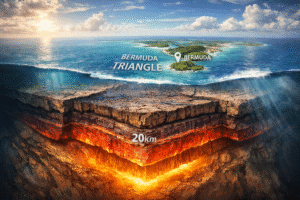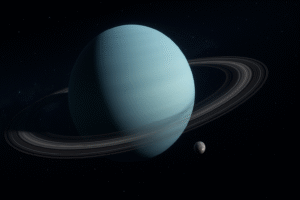Fun fact: the oldest known “star map” might be older than writing itself — etched not on paper, but in the memory of the sky.
How Did Humans First Map the Stars? It’s a question that connects astronomy to art, curiosity to survival. Long before telescopes, satellites, or even compasses, our ancestors looked upward, tracing invisible grids across the night. For them, the stars weren’t random dots — they were signs, stories, and navigational beacons.
This wasn’t idle stargazing. To early farmers, sailors, and priests, the heavens were calendars and clocks. Knowing where and when a star appeared could decide when to sow seeds or when a river might flood. What began as awe became one of humanity’s first sciences — astronomy without instruments, cosmology without equations.
The Ancient Impulse: Why Map the Sky at All?
Long before anyone spoke of galaxies or gravity, people understood patterns. The stars rose, set, and returned — with beautiful precision. Ancient Egyptians used the star Sirius to predict the Nile floods. Babylonians saw omens in planetary alignments. Polynesian navigators memorized star paths to cross vast oceans without tools.
The motivation was simple: mapping meant survival. For farmers, it brought predictable seasons. For sailors, direction. For rulers, legitimacy — because mastering the heavens meant controlling time. The sky wasn’t just above them; it ruled them.
From Caves to Constellations: The Earliest Star Maps
Imagine a Paleolithic human, tens of thousands of years ago, staring at the same stars you see tonight. On the walls of caves like Lascaux in France, some archaeologists believe that dots near animal figures correspond to constellations such as Taurus and the Pleiades. Whether those were early “maps” or coincidences remains debated — but the desire to record the heavens is unmistakable.
Millennia later, the Nebra Sky Disk — a bronze artifact from around 1600 BCE discovered in Germany — shows gold inlays representing the Sun, Moon, and stars. Its inclusion of the Pleiades cluster suggests not just observation, but intent: someone was already organizing the sky into recognizable patterns.
By 1500 BCE, Egyptian astronomers had inscribed the first reliable star charts inside tombs, linking constellations with gods and afterlife journeys. Their heavens weren’t merely measured — they were mythologized.
Mesopotamian Pioneers: Writing the Sky in Clay
If the story of astronomy had a cradle, it was Mesopotamia. Babylonian astronomers in the first millennium BCE began recording celestial events on clay tablets — documenting star risings, eclipses, and planetary motions. Over centuries, their records evolved from lists to predictive tables, forming the earliest known astronomical catalogs.
These scholars didn’t just observe; they calculated. By connecting celestial cycles with earthly events — harvests, wars, coronations — they invented both astrology and data-driven astronomy. The idea that the heavens followed laws was born here, scratched into soft clay with reed styluses.
Their precision was astonishing for the naked eye. They could predict lunar eclipses, track Venus, and chart the movement of constellations with mathematical consistency.

The Chinese Legacy: Mapping a Thousand Stars
Half a world away, ancient Chinese astronomers were doing something equally remarkable. By the 4th century BCE, observers like Shi Shen, Gan De, and Wu Xian were cataloging hundreds of stars and dividing the sky into regions — a precursor to the modern celestial coordinate system.
The Dunhuang Star Chart, created during the Tang Dynasty (7th–10th century CE), is the oldest complete star atlas still preserved. Painted on silk, it maps more than a thousand stars across twelve vertical panels and one circular polar map. Each dot and line corresponds to real astronomical observations, accurate to within a few degrees — an extraordinary feat for an era without telescopes.
This chart wasn’t just scientific. Ink colors distinguished different astronomical schools, suggesting debate and revision — proof that ancient China not only mapped the stars but nurtured intellectual dialogue about how to do it best.
The Greek Revolution: When Geometry Met the Heavens
Then came the Greeks, who did something radical: they turned sky-mapping into mathematics. Around 150 BCE, Hipparchus of Nicaea compiled a catalogue of about 850 stars, assigning each a celestial latitude and longitude. This transformed astronomy from myth to measurement.
Hipparchus compared his data with older records and made a profound discovery: the Earth’s axis slowly wobbles — a phenomenon now known as the precession of the equinoxes. His catalogue, though lost, influenced Claudius Ptolemy, whose masterpiece The Almagest (2nd century CE) included more than a thousand stars, forming the foundation for Western astronomy for over a millennium.
Greek astronomers used instruments like the armillary sphere, astrolabes, and dioptras to measure angular distances between stars. With them, they could map the sky with surprising accuracy, all by sight. Their maps weren’t drawings of the heavens — they were geometrical reconstructions of the universe itself.
Tools of the Sky: Measuring Without Telescopes
How did these ancient minds measure the heavens without lenses or electronics? They relied on geometry, patience, and ingenuity.
Gnomons — simple vertical sticks that tracked shadows, marking solstices and equinoxes.
Astrolabes — rotating disks that allowed observers to measure the height of stars above the horizon.
Armillary spheres — metal rings representing celestial circles, used to teach and calculate star positions.
Sighting rods and dioptras — basic sighting devices for measuring angular separations.
What they lacked in technology, they made up for in repetition. Night after night, generation after generation, they refined positions, adjusted errors, and passed the knowledge down like sacred code.
Artifacts That Froze the Sky in Stone
One of the most fascinating relics of early star mapping is the Farnese Atlas, a Roman statue from the 2nd century CE showing the Titan Atlas carrying a celestial globe. The constellations carved onto it align with known Greek catalogs — possibly Hipparchus’s own. The globe’s accuracy allows modern scientists to date when those coordinates matched the actual night sky, making it a three-dimensional fossil of ancient astronomy.
It’s humbling to think that the stars we see tonight are the same ones Atlas held on his shoulders two thousand years ago.

Mapping Beyond the West: Indigenous Sky Traditions
Not all star maps were written in scrolls or stone. Many were sung, danced, and remembered.
The Ojibwe people of North America speak of the Giizhig Anung Masinaaigan — the “Sky Star Map” — where constellations embody cultural stories and seasonal guidance. In Australia, Aboriginal astronomers used “songlines” to navigate land by sky, their constellations alive with ancestral meaning.
In India, the Vedic nakshatra system divided the sky into 27 lunar mansions, each marking a portion of the Moon’s journey. These weren’t just astronomical divisions; they structured calendars, rituals, and myth.
Such sky maps remind us that science and spirituality once shared the same sky — that looking up was both an act of measurement and of meaning.
Did We Lose Something When We Mapped the Sky?
Here’s a thought: mapping made the universe measurable — but did it make it smaller?
When constellations turned into coordinates, and myths turned into math, we gained precision but lost poetry. For ancient observers, the stars weren’t cold spheres of plasma; they were gods, guides, and companions.
Modern astronomy, armed with telescopes and satellites, can pinpoint billions of stars. Yet our ancestors, with nothing but their eyes, understood their rhythm and relevance. Their maps didn’t just chart where stars were — they told us why they mattered.
Perhaps, in our quest to measure everything, we’ve forgotten to simply marvel.
Conclusion
From Paleolithic carvings to Babylonian tablets, from Chinese silk scrolls to Greek geometry, humans have been mapping the night for more than thirty thousand years. What began as survival evolved into science — and along the way, became one of humanity’s greatest expressions of wonder.
Every map of the stars, whether drawn in pigment, clay, or code, tells the same story: we are creatures who can’t stop looking up. The stars were our first teachers, our first calendars, and perhaps our first mirrors.
So tonight, if you find yourself under a dark sky, look up. Trace a constellation with your finger. Somewhere deep in time, someone else did the same — and began to map not just the heavens, but humanity’s longing to belong within them.
Author’s Note
If this story made you pause to look up at the night sky, then it’s done its job. The first star maps weren’t perfect — but they were profoundly human. In their dots and lines, we see the earliest spark of our shared curiosity: to know where we are, by knowing what’s above us.
G.C., Ecosociosphere contributor.
References and Further Reading
- A History of Astrometry – Part I (European Space Agency, Gaia Mission)
- Early Star Maps and Astrology (Center for History of Physics, American Institute of Physics)
- The Hipparchus Star Catalog (Wikipedia Article)
- The Almagest (Wikipedia Article)
- The Dunhuang Star Chart (Wikipedia Article)
- The Dunhuang Chinese Sky: A Comprehensive Study (arXiv Research Paper)
- Native Skywatchers and the Ojibwe Sky Star Map (arXiv Research Paper)
- Star Chart (Wikipedia Article)
- Early Star Catalogues of the Southern Sky (arXiv Research Paper)




